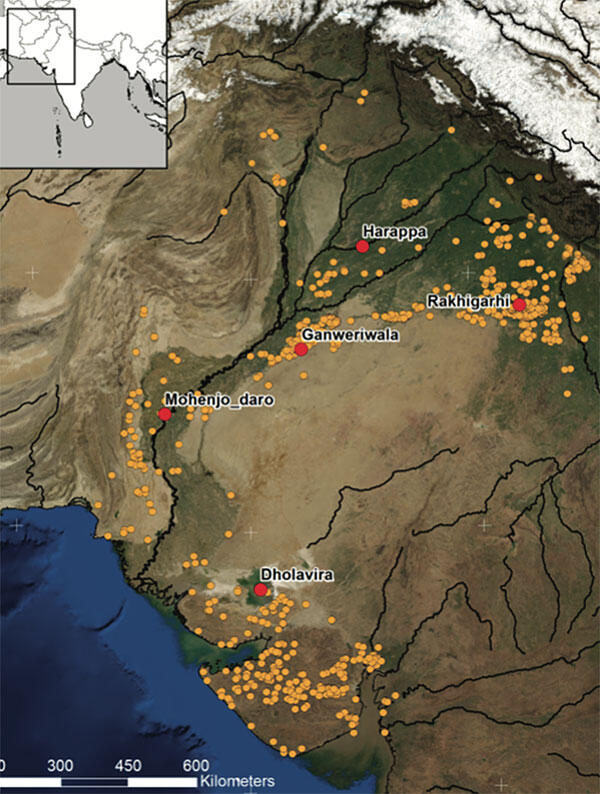"For archaeologists," write the authors Alessandro Ceccarelli and Cameron A. Petrie, "pottery is one of the most significant sources of data, not only for the durability and abundance of ceramic artefacts in the archaeological record, but also for the vast range of information on ancient societies that can be inferred from its study." This article describes how the emphasis in studying Indus ceramics has shifted from an observational, morphological approach to a more analytical approach where the materials and technologies used to compose an item are the focus of the researcher's attention. New, less expensive ways of doing materials analysis is increasing the amount of data available as well.
"The early assumption that the Indus region was characterised by homogenous cultural manifestations has led to further simplistic hypotheses. For instance, it has been suggested that the Indus Civilization was a vast political entity, dominated by a widespread, standardised agricultural system. In the last thirty years, however, scholars have begun to advocate for a different scenario, where environmental and cultural heterogeneities in the Indus zone are given a pivotal role," write the authors "this new perception of Indus ceramics is allowing scholars to consider a different scenario, where regional diversity and identity can now be further explored" (p. 93).
Maybe the Indus civilization was something like today's and yesterday's nations and kingdoms, integrating many sub-groups and clans? A thin veneer, supporting a wide social contract in trade with a system of weights and measures whose writ extended well outside the region.
They write of one researcher who "set out to obtain data through the use of a portable petrographic analysis kit combined with chemical analysis. Focusing the analysis on two urban sites, Rehman Dheri (Gomal plain) and Harappa (Pakistani Punjab), and two smaller sites, Taraki Qila and Lewan (both Bannu basin), Chandler demonstrated that no evidence of exchange of pottery vessels between the three regions could be observed; however, a certain degree of exchange of knowledge, technology and innovations was proposed. Roux’s analyses of archaeological ceramics from Kalibangan and comparative experimental pottery made it possible to identify wheel-fashioning methods on the basis of surface features and micro-fabrics, which provide evidence of the complex sequences involved in the forming processes of Indus vessels" (p. 96, footnotes).
An excellent summary and discussion of the new frontiers confronting Indus ceramics and our understanding of the Bronze Age Indian subcontinent. One of 45 articles in the superb Walking with the Unicorn (2018).
strong>
Image: The Indus zone. Map showing distribution of Indus sites during the Urban period (after Petrie et al. 2017: 44)

